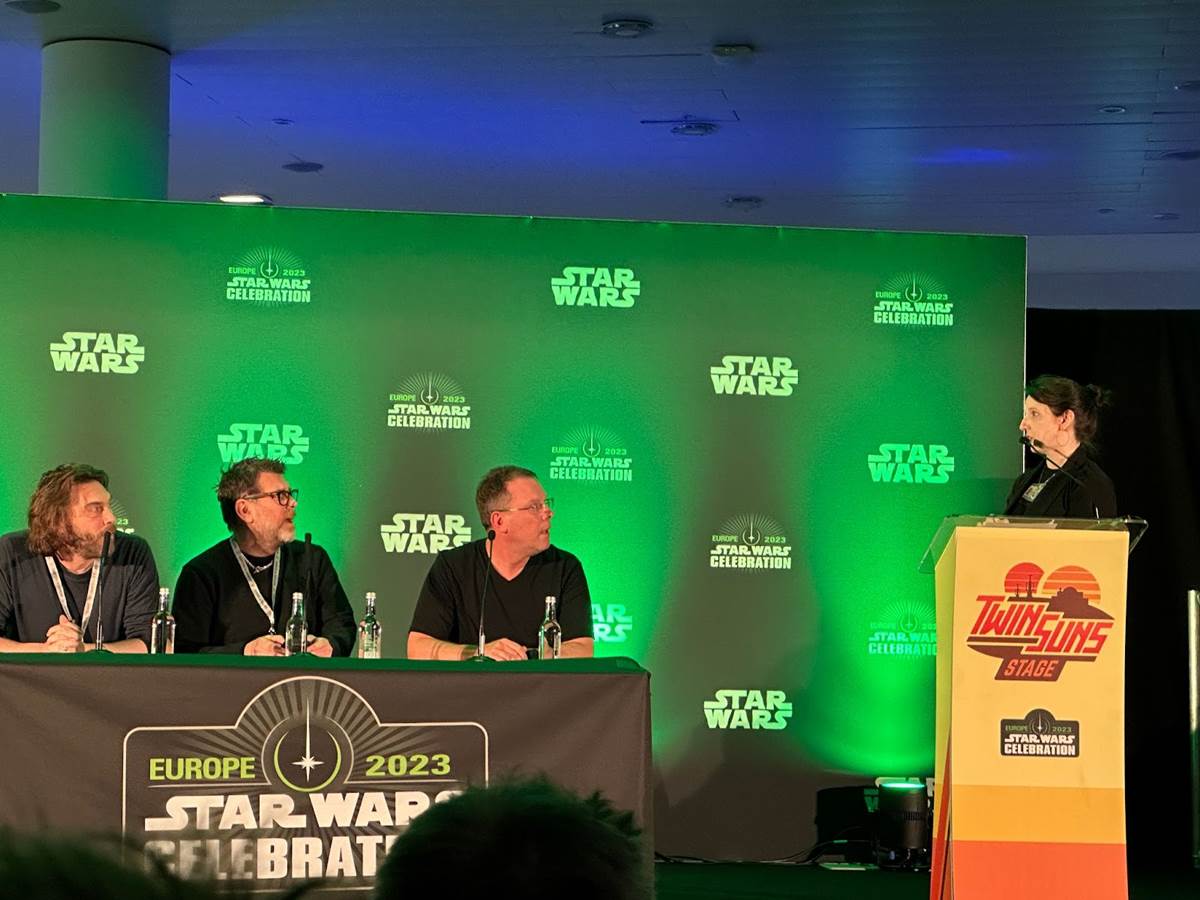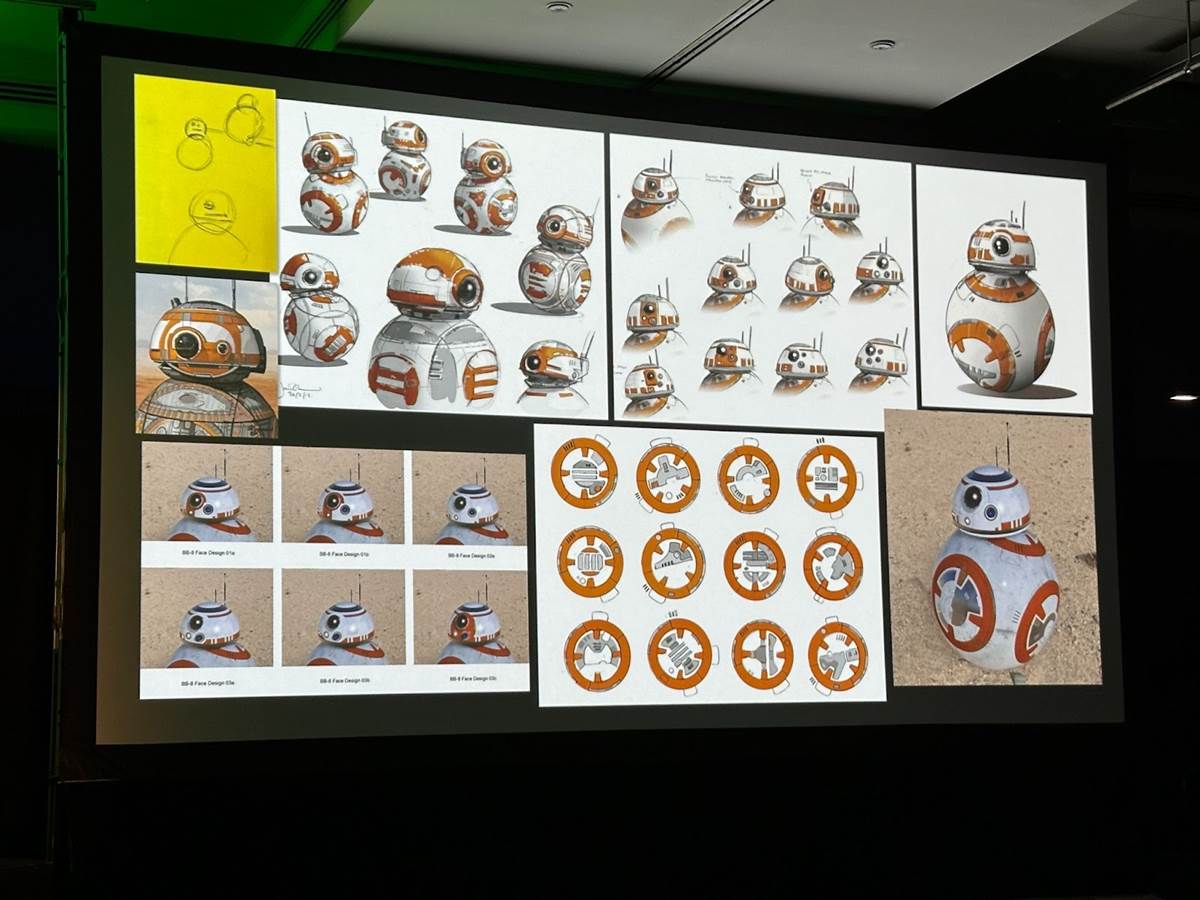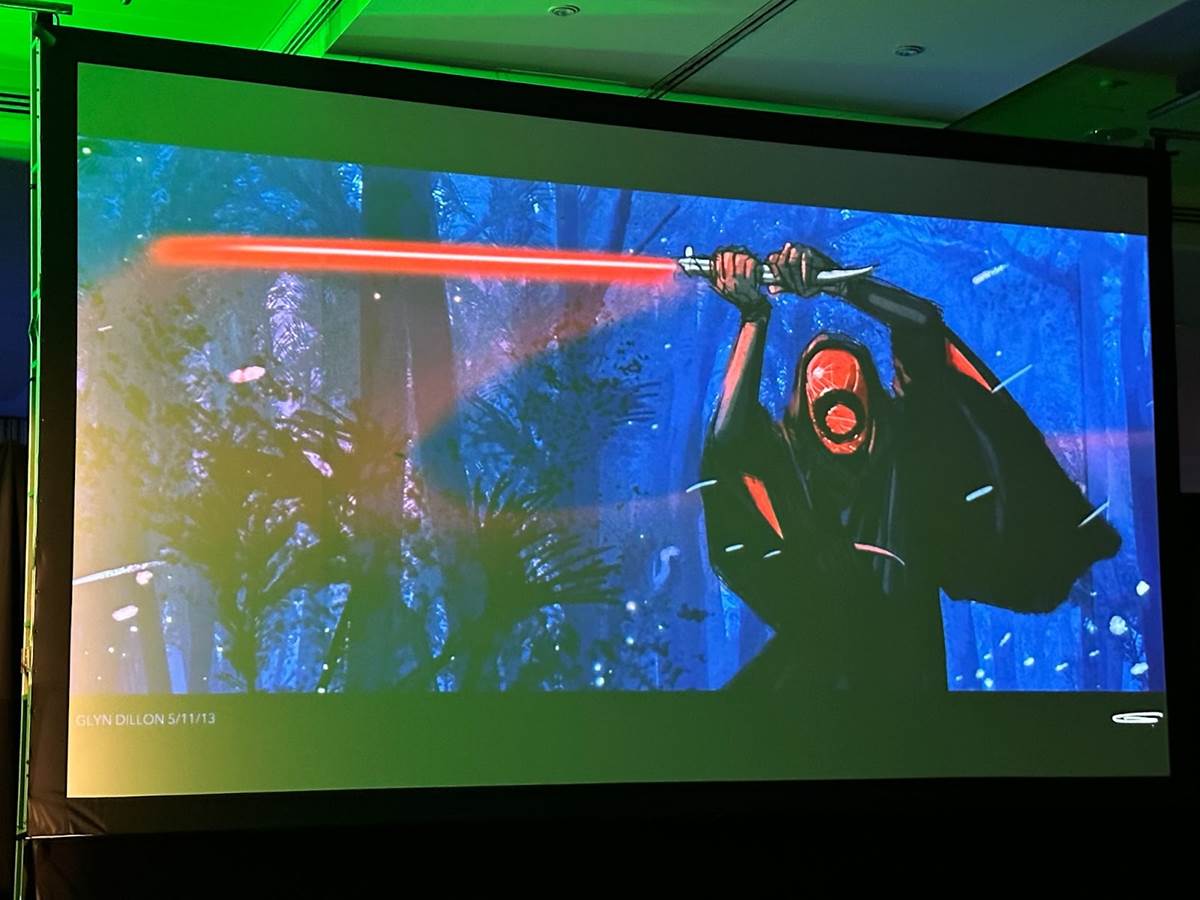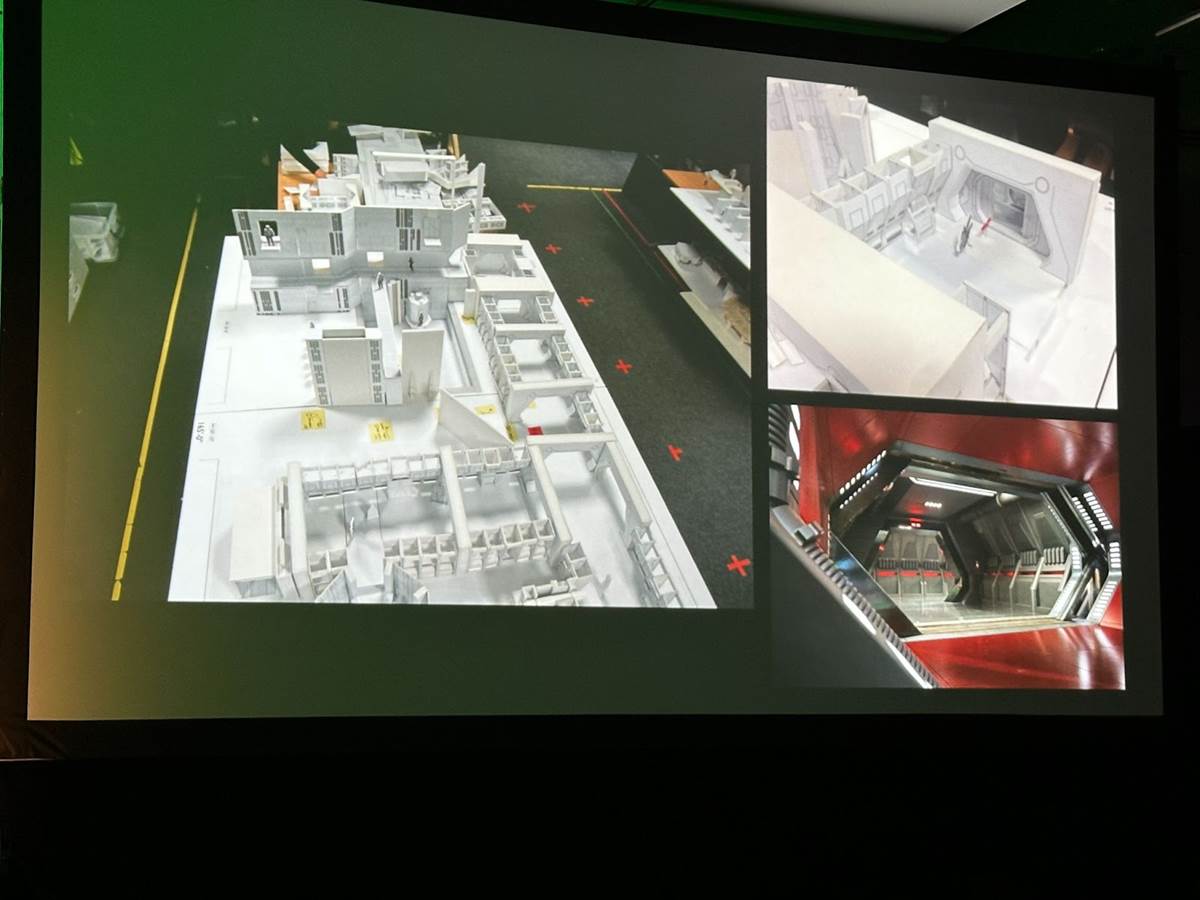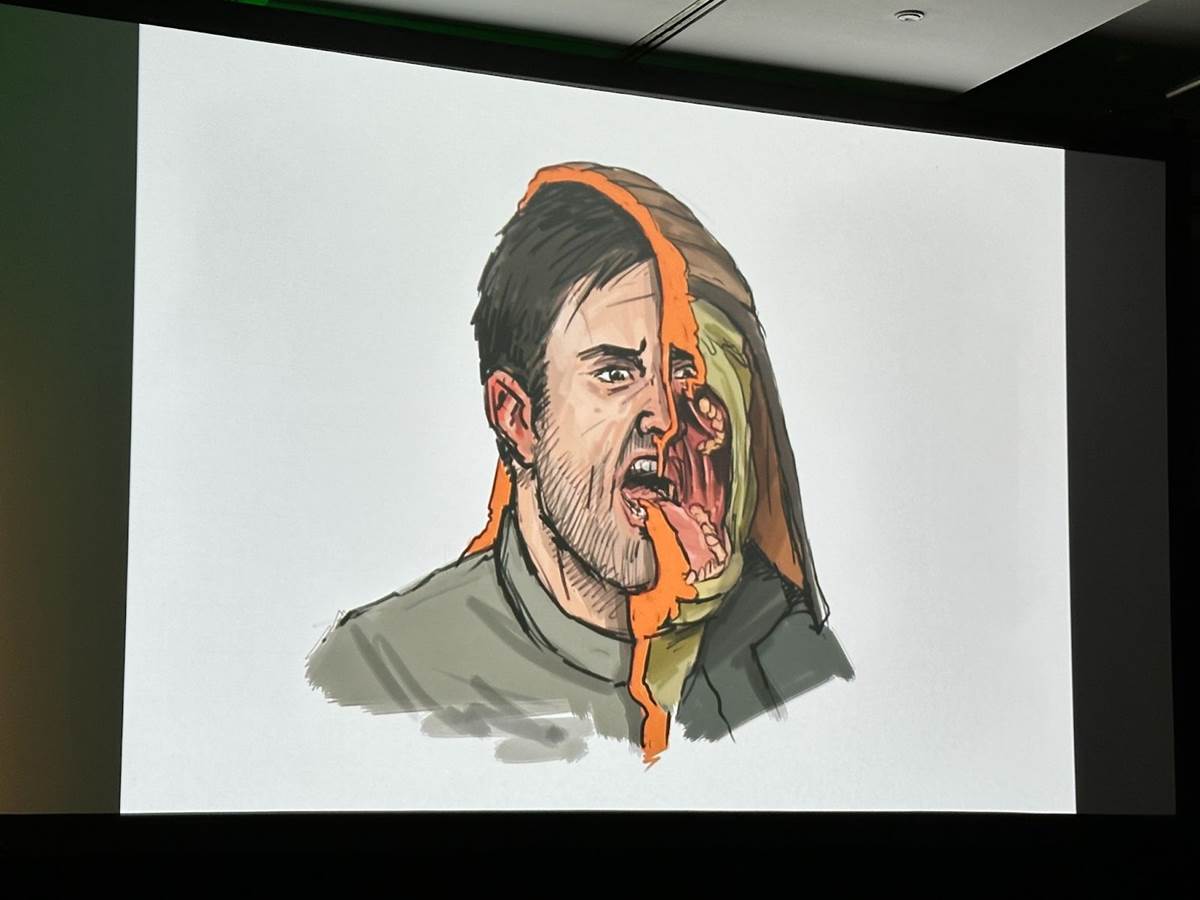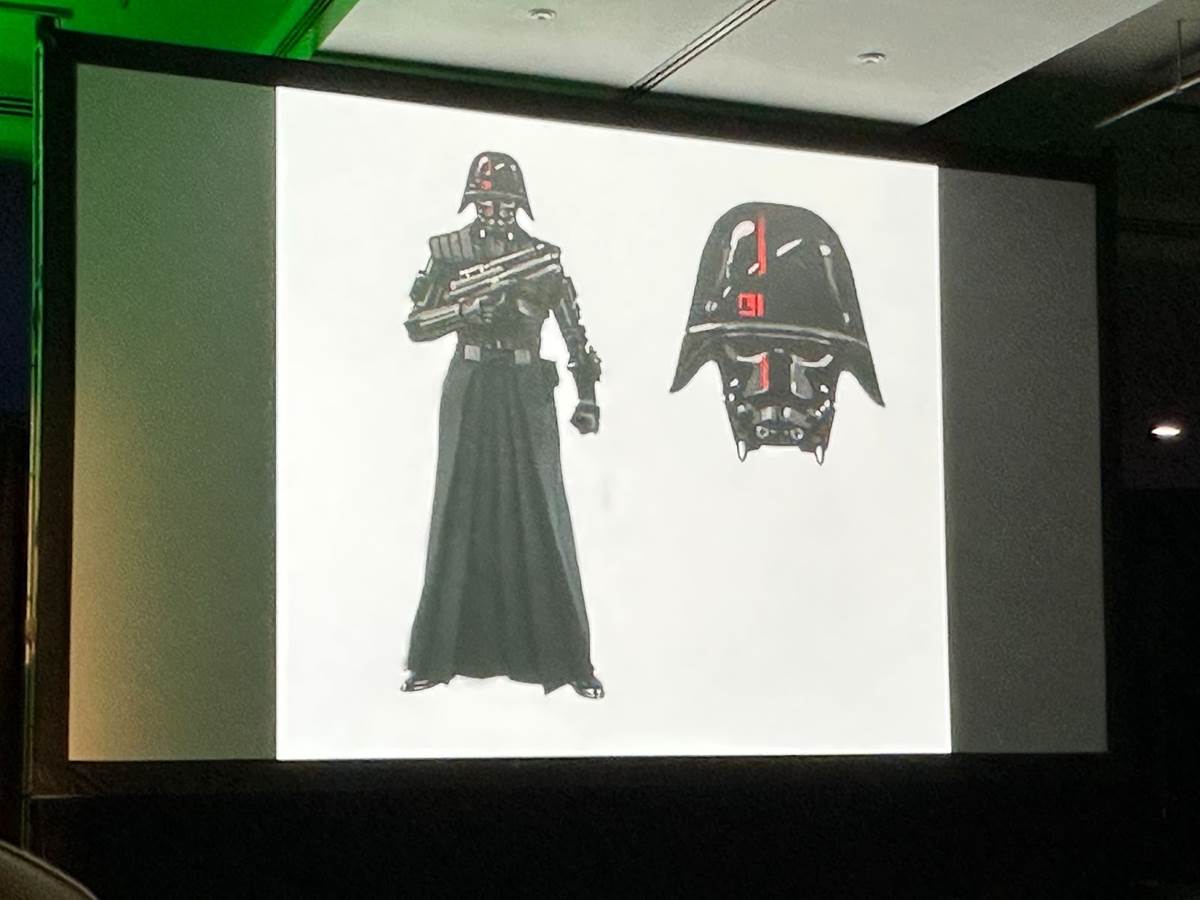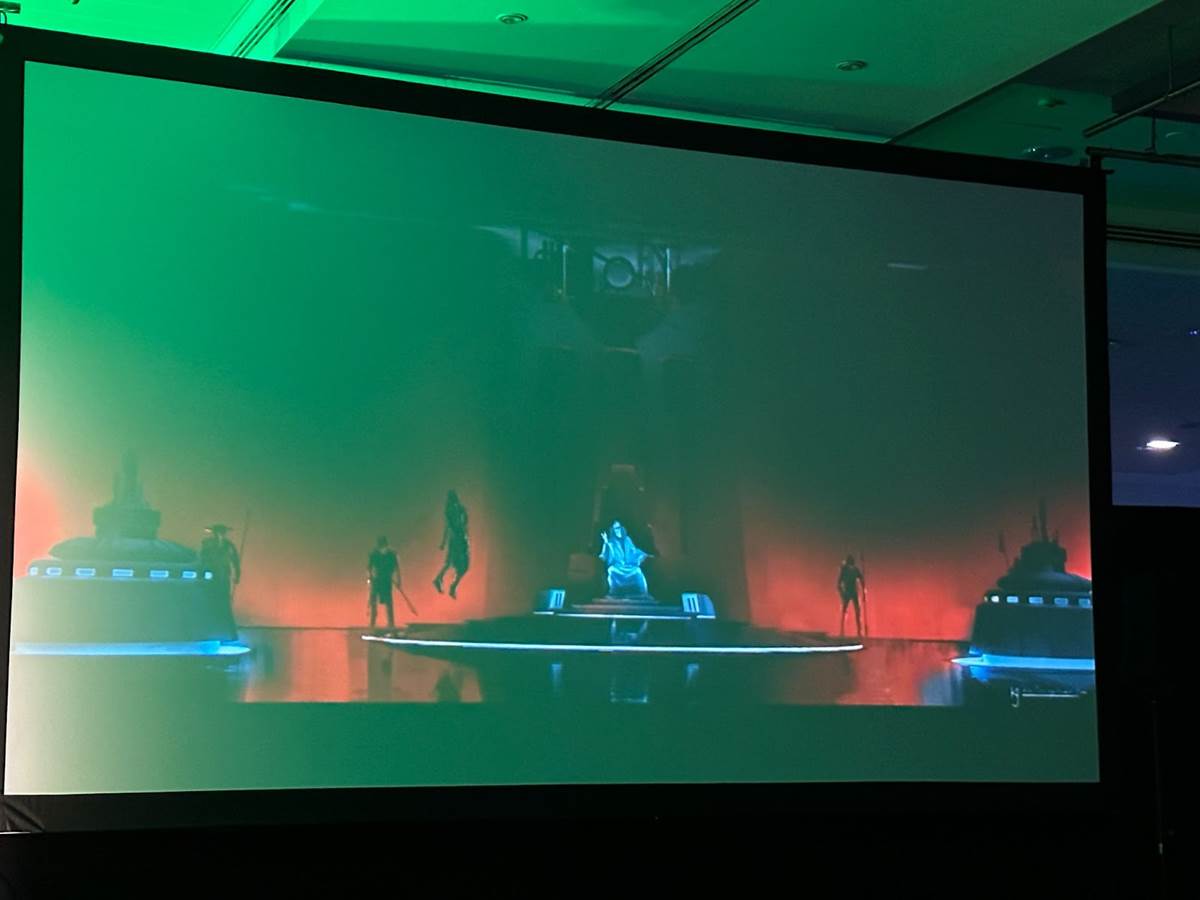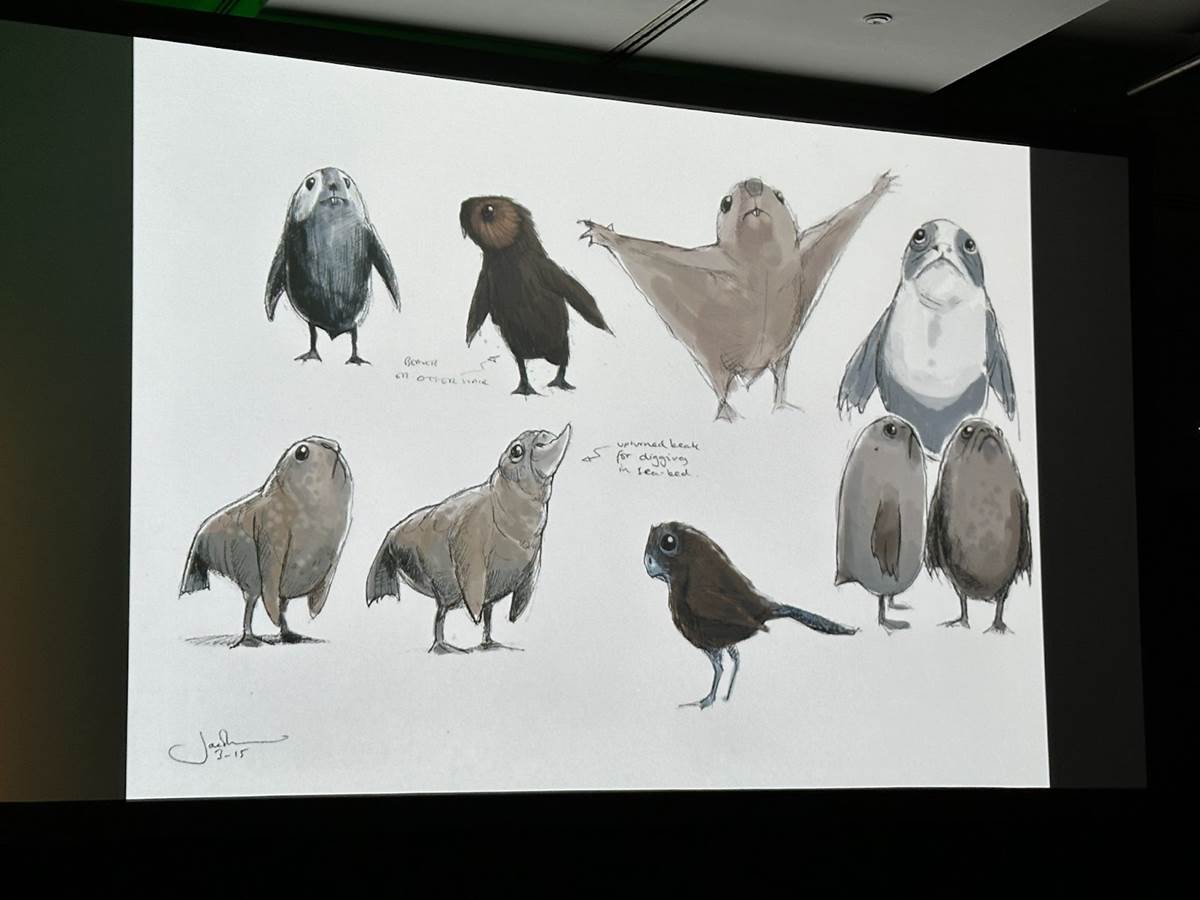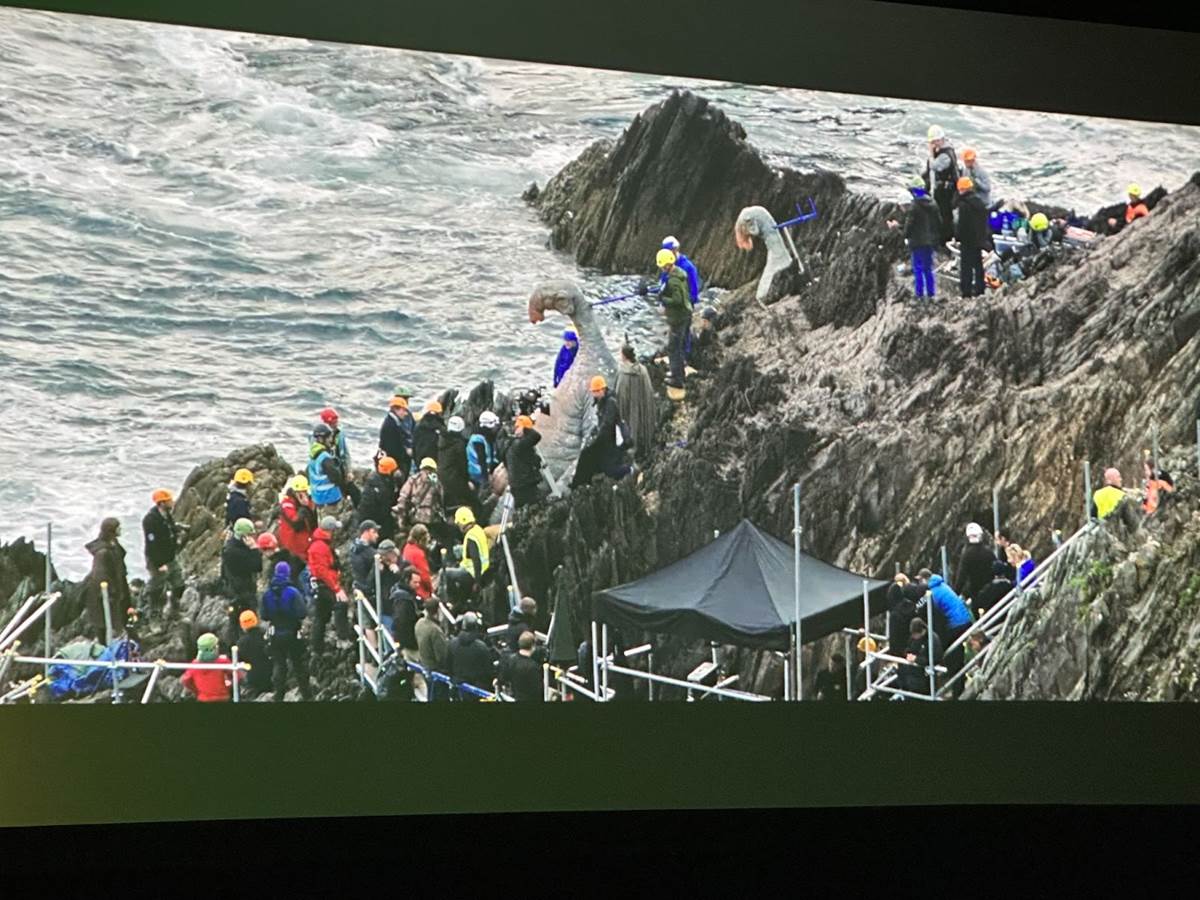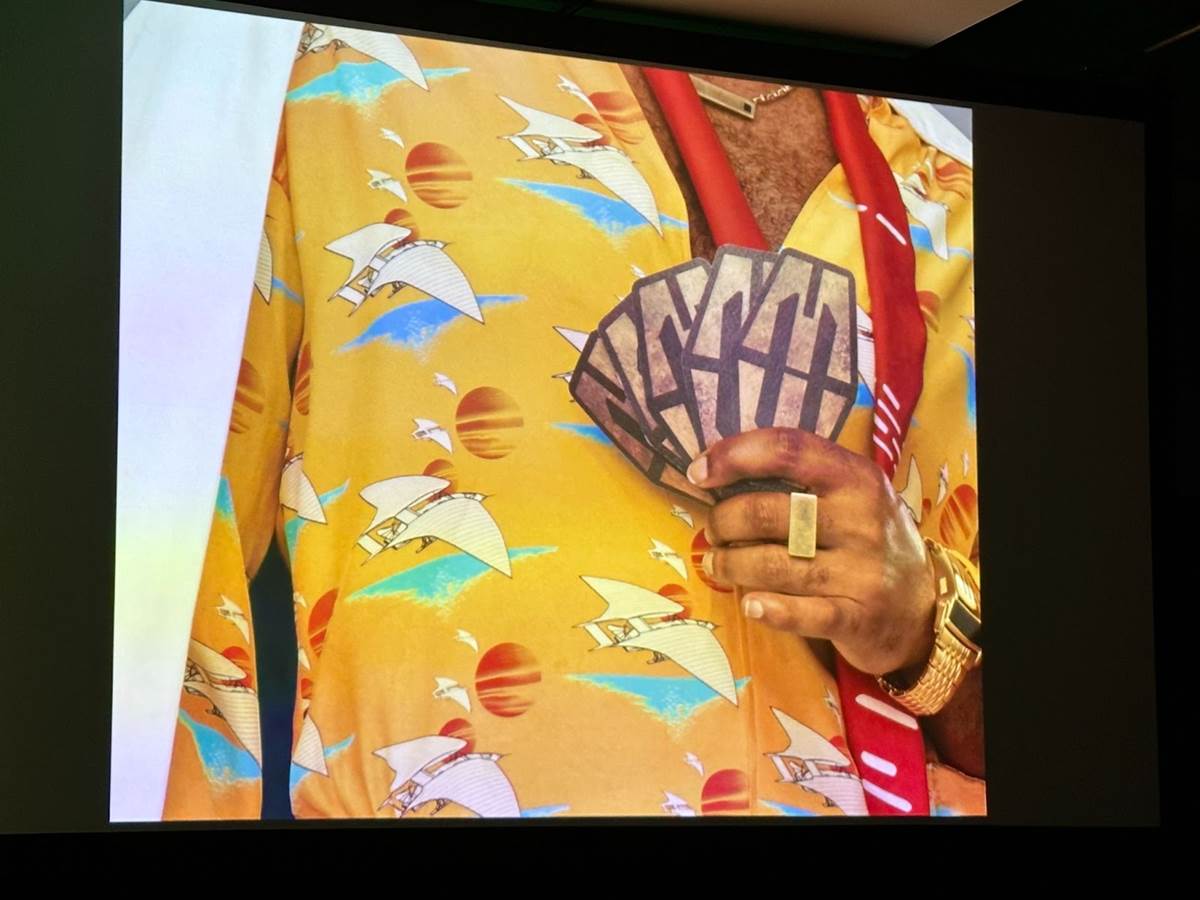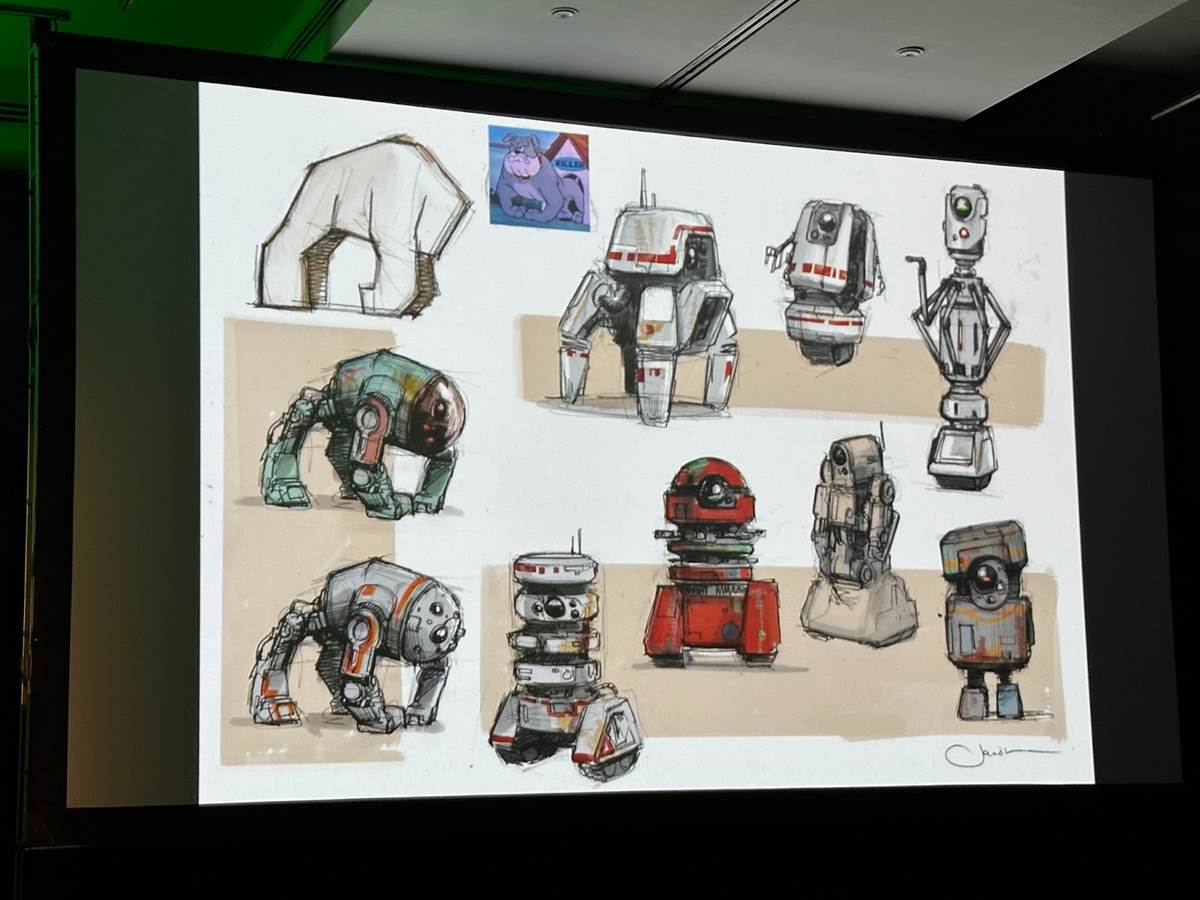When Star Wars Celebration was last in London in 2016, The Last Jedi was still in production. With five Star Wars films made in London since the Disney acquisition, this year’s event offered a perfect reason to celebrate the homegrown artists who helped shape the most recent trilogy, plus two A Star Wars Story films. Host Amy Ratcliffe was joined by panelists Kevin Jenkins (Production Designer), Jake Lunt Davies (Concept Designer & Storyboard Artist), and Glyn Dillon (Costume Designer), who all had one thing in common: They were first inspired to choose their careers by art books produced for the original trilogy, which makes their own art being featured in books about the films they’ve worked on feel like full circle moments. The panel also took a moment to honor Norm Reynolds, a production designer on the original trilogy. Kevin Jenkins shared an anecdote of Norm’s set visit on The Force Awakens and the awe he and production manager Robert Watts had at seeing the Millennium Falcon on set again.
Amy Ratcliffe guided the hour-long discussion in chronological order, starting with Star Wars: The Force Awakens. From an initial Post-It sketch by J.J. Abrams to the final screen-used droid, Jake Lunt Davies spoke of the challenges of creating BB-8. Chief among them was how big the rolling droid should be.
Glyn Dillon recalled being tasked with designing a costume for the “Jedi Killer,” a character who would later receive the name Kylo Ren. His initial briefing revealed that the character had once fought with Luke Skywalker and among Glyn’s character exploration was an idea that the nemesis had been part of a gang. He designed an entire array of members to present to J.J. Abrams, some of whom ended up being used as tertiary characters in The Force Awakens and other films from the Disney era. But it was the art of Chris Foss, a science fiction artist who frequently used curved lines, that ultimately gave Glyn the idea for a unique pattern on Kylo Ren’s helmet, which J.J. Abrams switched from yellow to chrome in the process.
Kevin Jenkins was primarily focused on production design for the third act of The Force Awakens, with Starkiller Base being one of his greatest challenges. He used models to help create the interior spaces that would be needed for the story. Recalling lessons learned while making the original trilogy, Kevin also looked for opportunities to reuse set pieces.
The character of Pao from Rogue One: A Star Wars Story was originally designed as a scavenger for The Force Awakens, plucked from the design stage by director Gareth Edwards. Jake Lunt Davies had to do some redesigning to transform the character into a soldier for the attack on Scariff, and another challenge was making the big-mouthed
Drabatan something that an actor could really wear. Performer Derek Arnold was the man in the suit, with limited visibility through the mask’s mouth and, when closed, he relied solely on directions from an assistant via an earpiece to tell him where to go and how far to move. Like most things in Star Wars, elements of the costume were as simple as a visit to a consignment store, with vintage rugby knee pads used on the uniform’s shoulders.
Glyn Dillon had the challenge of creating the Death Troopers that followed Director Krennic around. These were tough to design and many revisions were passed on by Gareth Edwards. One of the scrapped designs was reused for the Tank Troopers when George Lucas came for a set visit and commented on it. Gareth asked for the Death Troopers to have an insectoid quality, which is how they ended up with multiple eyes on the helmet. They were designed with the capability of glowing green, although this feature was never used in the finished film. The thin design of these troopers also created a casting challenge, as they needed to be worn by very tall performers in order to cast a different silhouette than your average Storm Trooper.
Moving on to Star Wars: The Last Jedi, Kevin Jenkins was given the task of designing the throne room of Supreme Leader Snoke. Director Rian Johnson wanted the room to have curtains all around it, which doesn’t sound very Star Wars. But when Kevin found out the reason, that his throne room was set up within remnants of the Empire, he set to work. Ultimately, he was inspired by the Red Room in Twin Peaks, translating it into a style consistent with Ralph McQuarrie’s work.
Sequences on Ahch-To were filmed on Skellig Michael, a UNESCO Heritage Site full of puffins, which necessitated the creation of Porgs. Since these creatures would be placed to cover up real birds in the background, Jake Lunt Davies began his work with their basic size and shape but revealed multiple ways their look could’ve gone. At one point, he was even developing them more like seals than birds. Puffins also inspired the design of the Caretakers, the nun-like inhabitants of Ahch-To.
Another major Ahch-To challenge was the Thala-sirens, colloquially known to the designers as “sea cows” (where green milk comes from). They weren’t allowed to modify the rocky landscape of Skellig Michael, so the back of these giant puppets had to be sculpted to sit perfectly atop the rocky cliffs they would be filmed on, with lidar technology helping to map them. Each giant creature had to be put in place by helicopter, and each puppet required two puppeteers to be sealed inside for the day, equipped with all the necessary provisions to get through it.
On Solo: A Star Wars Story, Glyn Dillon was tasked with creating a Hawaiian-style shirt for Lando Calrissian to wear. If you think about Star Wars costumes, it’s rare for garments to feature a pattern, so this left the costume designer scratching his head for a way to bring this concept into the universe without it feeling too out of place. He looked to the past, with the design of Lando’s neckerchief filled with laser blasts from A New Hope. As for the pattern on Lando’s shirt, it’s based on a Ralph McQuarrie design of a ship that looks like a bird, with the image of dual suns behind it.
The desert planet of Pasaana in Star Wars: The Rise of Skywalker was originally intended to be filmed in Turkey, but for geopolitical reasons, it was reset to Jordan. Kevin Jenkins was excited to film there as they were working in the same desert as Lawrence of Arabia, although the scale of the production necessitated the creation of 25 miles of road to be built. Cardboard cutouts of people were used to make scenes look more crowded than they really were and also gave the visual effects team some scale for reference. A five-foot-tall Sandcrawler was filmed on location, with children dressed as Jawas walking in the distance to create forced perspective. The epilogue, in which Rey returns to Tatooine to bury two lightsaber hilts, was also partially filmed in Jordan, with the entrance to the Skywalker homestead built in secret. However, some of these scenes were also filmed on the backload at Pinewood Studios.
The only series touched upon in the panel was Andor, with Jake Lunt Davies showcasing the development of B2EMO. He was asked to create a droid that was like a living Swiss army knife. In the beginning of the character exploration, Jake was looking at the design of bulldogs, particularly Spike from the classic Tom & Jerry shorts. Over time, this evolved into the stocky cylindrical droid we fell in love with in the series.
Stay tuned to Laughing Place all weekend for more recaps from Star Wars Celebration Europe. All of these films films are currently streaming on Disney+.

